Outdoor School
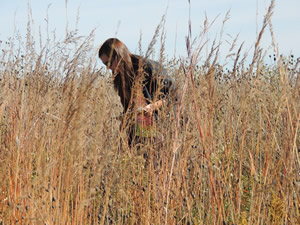
PHOTO COURTESY OF NORTHEAST IOWA COMMUNITY COLLEGE
Outdoor spaces are a valuable
campus asset, adding curb
appeal and so much more. Studies
show that spending time outside decreases
stress, increases concentration and boosts
overall health. Some campus outdoor
spaces work as actual living classrooms,
supporting curriculum and enhancing
education; all benefit the surrounding
community. In this article, College Planning & Management takes a tour to four
diverse outdoor spaces around the country.
The Farm at Suburb’s Edge
Portland Community College (PCC),
Rock Creek Campus, Portland, OR
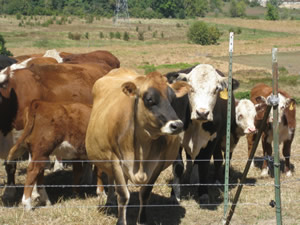
PHOTO COURTESY OF PORTLAND COMMUNITY COLLEGE
Tucked in the corner of suburban
Washington County live 30 sheep, 24 head
of beef cattle, a clutch of chickens, a goat
named — wait for it — George Thorogoat,
and more. These animals are part of PCC
Rock Creek’s Farm, a living laboratory that
supports the school’s two-year Veterinary
Technology program.
“Not every vet tech program has a
farm,” boasts Dr. Brad Krohn, SAC chair
of the vet tech program. Not to be confused
with a hobby farm or petting zoo,
these animals give students hands-on
experience as they learn how to examine
and treat livestock. The program is
held to the high standards of the USDA
Animal Welfare Act, which requires
meticulous record keeping. “Reporting
to the USDA is one of my biggest time
consumers,” says Krohn.

PHOTO COURTESY OF PORTLAND COMMUNITY COLLEGE
OPEN UP AND SAY “BAA.” As part of the Veterinary Technology program on the Rock Creek Campus farm at Oregon’s
Portland Community College there are almost 30 sheep, two dozen cows, five alpacas, three rabbits, a horse, a donkey,
some chickens, and a group of dogs and cats at a next-door kennel. The vet tech program rescues groups of dogs and cats
from local shelters for students to provide daily care, exercise and assist with medical procedures to keep them healthy.
Students also clean the on-site kennel, organize animal feedings and participate in farm activities. In addition to their
program work, students fund raise and lend their expertise to local nonprofits.
The farm has its own funding stream separate from the vet tech program and a
full-time coordinator on campus to provide
24-hour support. “You can’t turn your back
on a farm,” Krohn explains.
While neighbors in the surrounding
subdivisions can often be seen waving
from the fence, they’re not invited
to interact with the livestock. “It’s a
biosecurity issue,” says Krohn. There are
community outreach tours to promote
science education and careers to underserved
populations, however. The rest
of the school is also encouraged to use
the farmland. There are solar panels on
grazing sites and a collaboration with the
cafeteria for composting.
Along with the farm, PCC Rock Creek
has a 3.6-acre Learning Garden with
raised beds and row cropping. Food harvested
from the garden is sold at a weekly
farmer’s market, given to the cafeteria or
donated to the Women’s Resource Center
Canteen, a food-assistance program for
students.
The Rare Prairie
Northeast Iowa Community College
(NICC), Calmar Campus, Calmar, IA
Think of Iowa and you think of corn. It
makes sense. “Only one tenth of 1 percent
of Iowa prairie remains in the state,” says
Ronald Lindblom, Outdoor Learning
Lab manager, NICC. “We have the most
disturbed landscape in America, maybe
the world.”
That disturbance comes at a cost.
The lack of native plants brings severe
flooding, soil loss, polluted water and
rivers that run at 85 percent capacity during
rainstorms. “Normal is 50 percent,”
Lindblom explains. And then there’s the
disconnect between Iowans and their
state’s cultural heritage. “There are people
who’ve lived in Iowa their whole lives and
never seen a prairie,” Lindblom says.
Northeast Iowa Community College
combats this with their 42-acre Outdoor
Learning Lab. Three-and-a-half miles of
open-to-the-public trail wind through
native forest, prairie, wetland and a forest/prairie mixture called savannah. The land
is used by students from NICC and other
local colleges for experiments in restoration,
conservation and sustainability and
enjoyed by everyone else. “I love seeing
students resting or walking the trails,”
Lindblom admits.
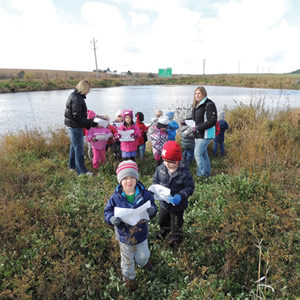
PHOTO COURTESY OF NORTHEAST IOWA COMMUNITY COLLEGE
GETTING BUGGY. The Outdoor Learning Lab on the
campus of Northeast Iowa Community College offers
students of all ages a chance to explore and learn about
the outdoors, including watching, counting and identifying
native insects.
The neighbors benefit from the Lab as
well. As the largest park in the small village,
the habitat supports native animals
and birds, facilitates cleaner water and
promotes health. A visitor’s center helps
educate the general public on the value of
the native area.
The school’s administration is already
aware of the Lab’s worth. The land functions
as a cost-effective ground cover
requiring only one-tenth the maintenance
budget of a lawn. Lindblom hopes
other Iowans embrace the benefits of
prairies, especially if they live near a
highway. The state plants native grasses
alongside roads for soil and water health,
but “recreational mowers” will often cut
them down just for fun.
One-Hundred-Year-Old
Arboretum in the Garden State
Rutgers, The State University of New
Jersey, New Brunswick, NJ
A century ago a landowner gifted
Rutgers with 180 acres. Today that gift is
the Rutgers Gardens, a mix of woodland,
meadow, research areas and public gardens
used by the school and surrounding
population alike. Students experiment with
hazelnut trees, day lilies and hollies. There
are certificate programs on plant breeding
and the principles and practice of smallscale
organic farming. You can also learn
about public garden management.
Or you could just bring your dog and
hang out for the day.
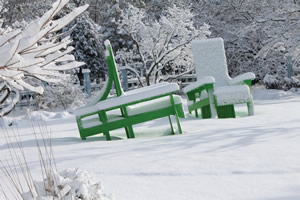
PHOTO COURTESY OF RUTGERS, THE STATE UNIVERSITY OF NEW JERSEY
TAKE A WALK ON THE WILD SIDE. Historically, the Rutgers Gardens was comprised of a series of horticultural collections
arranged in garden settings and spread over 50 acres. These collections and garden areas, the oldest of which dates back
to 1927, including a holly collection, bamboo forest, a rain garden, a pollinator garden and more, feature a diverse variety
of landscape plants with origins that span the globe. Open to the public 365 days a year, the Gardens provide and encourage
educational exploration and enjoyment for both Rutgers’ students and the community at large.
The Gardens are supported by revenue
streams large and small. A Mother’s Day
plant sale brings in cash, as do about 750
annual members. The big money makers,
however, are weddings, held in the WPAbuilt
log cabin and pavilion every weekend
during good weather.
“There are a lot of parks in this part of
New Jersey, but they have sports fields or
playgrounds,” reports public education coordinator
Debbie Henry. Henry started as a
volunteer at the Gardens, and for the last 20
years has seen locals and students delightfully
discover them. “People always say ‘I
didn’t know this was here,’” she reports.
Henry admits that there are difficulties
in running such a large space where
professors come, plant some research
and leave. The bamboo forest, for
instance, was developed by a professor
looking into winter nesting options for
bees. The professor is gone, but the forest
remains — and spreads — every year.
“We have volunteers from the Bamboo
Society come to cull the trails,” she says.
They also post signs in a variety of languages
telling guests where they can, and
cannot, harvest shoots for eating.
Campus Classroom, Local Asset
Rowan-Cabarrus Community College, Salisbury, NC
Though it is not yet completed, the Outdoor Learning Center
Amphitheater takes advantage of the available land and natural
resources of the Rowan-Cabarrus Community College’s 100-acre
Salisbury, NC, campus to connect campus buildings and develop
walking paths and natural spaces for student learning exercises,
according to Carla G. Howell, chief officer/Governance, Foundation & Public Relations, for Rowan-Cabarrus Community College.
She explains the project via email, which was edited for brevity.
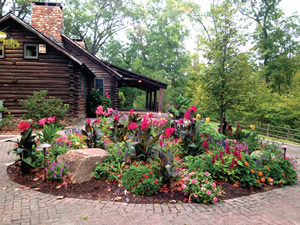
PHOTO COURTESY OF RUTGERS, THE STATE UNIVERSITY OF NEW JERSEY
Phase One, an investment of $1 million, prepared the infrastructure
for the 900-seat amphitheater. This project is designed to
provide an opportunity for students to utilize the natural habitats of
the outdoor learning center and the amphitheater for curriculumrelated
projects and instruction, while also providing the greater
Rowan County community with an outdoor performance venue.
The college envisions that several academic programs will utilize
this space on a regular basis. For example, Biology classes will
use the space to study natural environments, forest ecology, tree
identification, measure water quality, determine stream quality
and examine insects, as well as other biological-related experiments.
Environmental Science classes will also conduct soil and
water testing as well as identifying bacteria, insect census counts
and examining different biomes.
The college’s Fine Arts program will use the amphitheater for
musical performances. Art classes will use the space as a backdrop
for painting and drawing the natural scenic landscape. Photography
classes are another area in the Fine Arts curriculum that will
greatly benefit from this development.
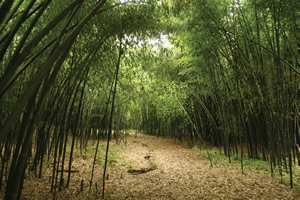
PHOTO COURTESY OF RUTGERS, THE STATE UNIVERSITY OF NEW JERSEY
The college’s active student life program envisions using the
outdoor learning center and amphitheater space for student club
activities, concerts and picnics. The college has no sports teams;
the amphitheater will be a vital part of students’ quality of life.
In addition to being an important and rare amenity on the
campus, the Rowan Chamber of Commerce, as well as the Rowan
Convention and Visitors Bureau, have stated that the development
of this project is an important component that they can market as a
quality of life factor to attract additional economic development to
the region. This will greatly benefit the local business community.
In these examples and countless others, colleges and universities
across the country are reaping the benefits, educational and
beyond, of integrating outdoor learning opportunities into their
daily operations.
This article originally appeared in the issue of .